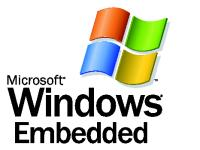
Quickembed provides high quality services on Windows CE that helps OEMs to realize their end product. The strength of Quickembed Systems lies in the fact that it offers turn key solutions in this area. We offers both board design and embedded software capability. Quickembed offers Windows CE services in the following areas
- BSP Porting
- Flash media drivers
- Device drivers
- Reference Design
- Power management
- Windows CE Product development
BSP Porting/Development
Quickembed is a specialist in taking the reference BSP provided by the Microprocessor vendors and customizing it and delivering a production quality BSP for the customer target platform. Boardon has successfully customized the reference BSP provided for various development Microprocessors like S3C2440, S3C6410 to production quality Windows CE BSP for various designed by its customers. Normally development boards mostly concentrate on the processor capabilities but the customer might be interested in one particular feature of the processor and might be adding a new set of peripherals that are not part of the development board to their product. Also development boards contain lot of glue logic which may have to be removed in the product designed by the customer. In the process, Quickembed not only modifies the BSP but also adds new capabilities to the reference BSP.
Quickembed offers the following services in Wince BSP porting.
Eboot services
• Diagnostics for various peripherals, OS download via USB RNDIS, Ethernet and Serial
• OS load/write from/to NAND, NOR, CF, SD/MMC
• Nand flash Bad block management in eboot
• OEM logo display till the OS fully comes up
Windows CE platform services
• OEM Adaptation Layer (OAL) modification
• Interrupt Controller changes
• Kernel Debugger KITL enabling
• Persistent Registry
Flash media drivers
Quickembed Systems offers complete NAND flash solution through its eNAND software for Windows CE. eNAND software includes the flash media driver and the error correction code. Quickembed provides support for a large number of NAND flash devices from various manufacturers like Toshiba, Micron, SanDisk, Fujitsu and Samsung. The following are the various advantages of using Quickembed nand flash solution
• OEM Adaptation Layer (OAL) modification
• Interrupt Controller changes
• Kernel Debugger KITL enabling
• Persistent Registry
Device drivers
Quickembed offers device drivers in the following areas
• GPRS - Quickembed offersGPRS Drivers which can simultaneously send data through GPRS and also monitor the signal strength. This calls for support for the RIL architecture.
• Camera Quickembed offers camera module and driver solutions. These camera modules sit on the high speed CMOS interface like S3C6410. Quickembed offers directshow compatible device drivers for Windows CE 6.0 for these Microprocessors.
• Nand flash Quickembed Systems offers device drivers and ECC for Nand flash devices.
• Wi-Fi Quickembed offers device drivers for AR5212/AR5213 on Windows CE.
Reference Design
Quickembed has a development board for Windows CE, catering to multiple applications. The S3C6410 based reference design is Quickembed handheld reference design that runs Windows CE 5.0 and Windows CE 6.0. customer can test any of the modern day consumer interfaces like GPRS,GPS, Ethernet, Wi-Fi, Bluetooth, camera and NAND flash. Other than this Quickembed has expansion bus interfaces where customers can build daughter modules which can be application specific,.
Power Management
Customers today are in need of advanced mobile devices that needs to be battery powered for a long period of time. For an example, Smart phone these days have a requirement of 125-150 hours of non-usage time. To achieve this and also by not going in for high cost batteries it becomes important to have a very good power management policy. Quickembed has designed handheld point of sale systems that has Ethernet, Wi-Fi, GPRS, bar code scanner, thermal printer, LCD, touch screen, contactless smart card, magnetic card that run Windows CE. These point of sale terminals had a standby time of 125 hours and also 8-12 hours of complete running time.
Power management generally takes place in three places
• During component selection Processor should be able to run at 1V and also all the peripherals like SDRAM should be low powered one meaning should be operational at 1.8V. Quickembed has got very good experience in choosing the components and has successfully designed products on the same.
• Device driver development - In Windows CE, if the power management APIs for each device is handled in the device driver. There are registry keys in the registry where the time can be set to drive the system to sleep mode if the system is in Idle mode for the above specified time. To drive the device to sleep mode the device drivers are notified by the power management portion of the BSP.
• Power management policy This is quite dynamic. The policy is more dependent on the application of the device. For example, if a user is watching Video and not touching the mobile device for 15 minutes then the device should not go to standby mode. To solve this problem, Quickembed proposes a policy where there will be different power management profiles based on what type of customer would use the product.
Windows CE Product development
Quickembed has developed products based on WindowsCE .Such products include Notebook and digital picture frames

